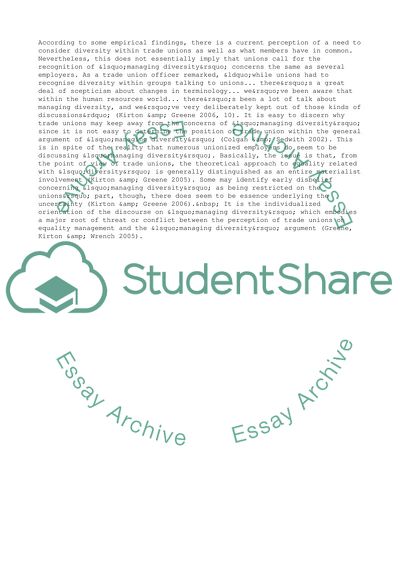Cite this document
(“Diversity Management: A Threat to Trade Unions Essay”, n.d.)
Diversity Management: A Threat to Trade Unions Essay. Retrieved from https://studentshare.org/management/1575004-critical-essay-managing-diversity
Diversity Management: A Threat to Trade Unions Essay. Retrieved from https://studentshare.org/management/1575004-critical-essay-managing-diversity
(Diversity Management: A Threat to Trade Unions Essay)
Diversity Management: A Threat to Trade Unions Essay. https://studentshare.org/management/1575004-critical-essay-managing-diversity.
Diversity Management: A Threat to Trade Unions Essay. https://studentshare.org/management/1575004-critical-essay-managing-diversity.
“Diversity Management: A Threat to Trade Unions Essay”, n.d. https://studentshare.org/management/1575004-critical-essay-managing-diversity.


